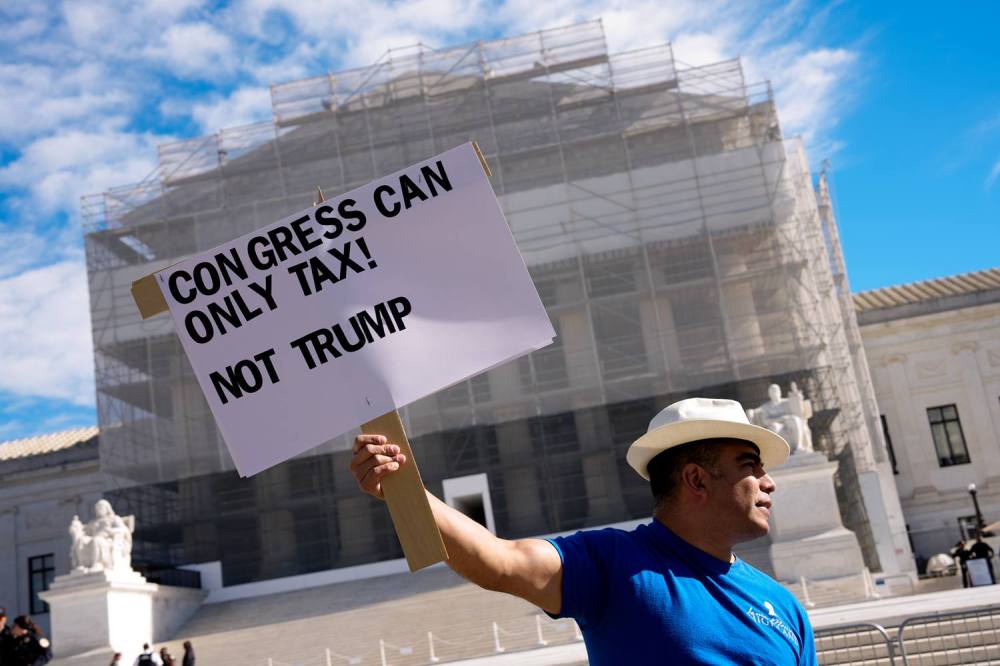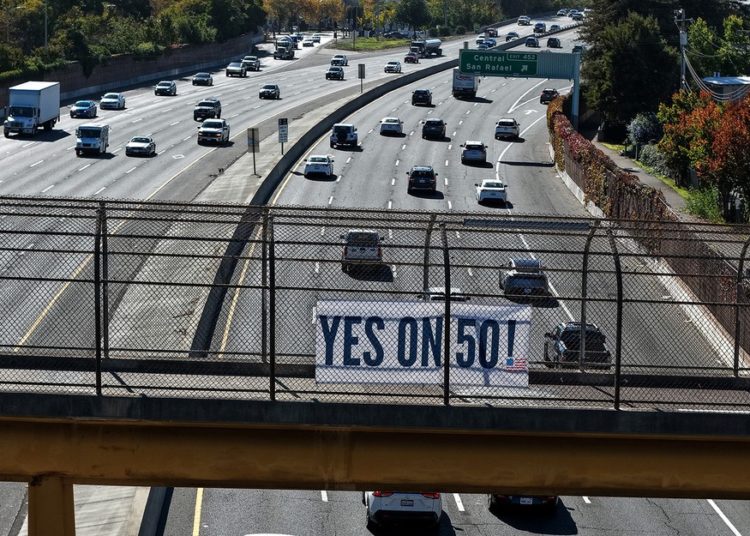The U.S. Supreme Court on Wednesday heard oral arguments in what is at once a wildly abstruse case, as most cases that reach the highest court usually are, but which boiled down to some pretty basic and seemingly important issues: Does the president have absolutely unfettered powers to mess with the entirety of the U.S. economy and a few dozen trillion dollars’ worth of international trade? The consolidated cases at issue challenge U.S. President Donald Trump’s sweeping global tariffs after he declared a national emergency.
The oral arguments featured plenty of deeply enjoyable and not at all impenetrable back-and-forth among the nine justices; U.S. Solicitor General D. John Sauer; Neal Katyal, the lead lawyer for the corporate plaintiffs; and the Oregon state solicitor general, Benjamin Gutman.
The first (layman’s) takeaways: One issue that was not deeply interrogated, and surprisingly so, was whether the five-decade existence of U.S. trade imbalances with some countries, and with all of them overall, constitutes the kind of supposed national emergency that triggered Trump’s novel use of the International Emergency Economic Powers Act (IEEPA) to raise taxes on Americans unilaterally.
The second noteworthy element was that the court, which in recent years has been steadfast in drawing the line on letting presidents unilaterally make major changes to the balance of powers among and between the branches of the U.S. government, seemed largely unconcerned with that possibility in this case. Several conservative justices took umbrage with Katyal’s argument that giving Trump unchecked power to tax Americans and disrupt the global economy was a “question of major doctrine”—that is, a statutory interpretation so politically or economically significant that the executive branch can’t make it without explicit congressional authorization—even though those same justices considered Biden-era rules on student loans and evictions during the COVID-19 pandemic to be wild executive overreach.
In terms of the tenor, the questioning broke down along familiar lines. Justice Clarence Thomas even weighed in, to throw a lifeline to the solicitor general; Justices Samuel Alito and Brett Kavanaugh also seemed, in their questions, to lean toward deference in an unprecedented use of presidential power. Chief Justice John Roberts, as always, was chameleon-like. Conservative Justices Amy Coney Barrett and Neil Gorsuch often seemed somewhat sympathetic to the plaintiffs’ argument that Congress has the power over taxation and that the Carter-era legislation at issue does not clearly grant tariff-setting power to the president. The three liberal justices were en banc and in bloc.
One of the problems for the U.S. government’s position stemmed from the Trump administration’s continued confusion over what import taxes even are. Tariffs are taxes, and taxation is in the purview of Congress, according to the Constitution, Justice Sonia Sotomayor noted to start the arguments. Sauer did not have a great response to that because Trump maintains that foreign countries pay U.S. import duties.
Much of the debate hinged on the interpretation of the word “regulate,” which is one thing the president is authorized to do with respect to imports under the IEEPA—a statute that had never before Trump been used to levy tariffs, perhaps because the statute never mentions tariffs.
At core, the question was whether in writing the IEEPA, lawmakers intended for the phrase “regulate … importation” to grant the president carte blanche taxation authority, even though Congress has often delegated tariff authority to the White House and almost always done so in specific ways and with specific limits. (One interesting point brought up was that the statute also provides for the regulation of “exportation,” which, if that implied tariffs, would be unconstitutional and illegal, thus raising the question of why the tariff-based regulation of imports would be legal.)
There were a great many citations of prior and important Supreme Court cases, which will send plenty of students scurrying back to the books, but none of those were, as the lawyers for the complainants repeatedly explained, probative for this case. That didn’t stop conservative justices from some creative contortions.
If Congress gave the president power to place embargoes, several justices asked, how is that different from taxing Americans? “There was no ‘Boston embargo party,’ but there was certainly a Boston Tea Party,” Katyal answered, noting that embargoes may limit the import of foreign goods but tariffs are taxes on imports—and that taxation authority was something that the country’s founders were uniquely worried about letting a president have.
Elena Kagan, one of the liberal justices, raised a very sharp point: If the IEEPA grants unlimited tariff power to any president for any invented reason whatsoever, why are there so many tariff-specific statutes? And why have no presidents before Trump ever used the IEEPA for tariff purposes despite frequently invoking its national emergency provisions?
But the wind vane line of the hearings may come from Gorsuch, who noted that ruling for the government in this case could be a “one-way ratchet” to more power in the executive branch and away from the people’s authority.
The Supreme Court could rule on the case early next year or even before the end of this year. Even then, the Trump administration will likely find another way to continue its war on trade. But this case is genuinely about a lot more than tariffs.
The post Initial Supreme Court Arguments on Tariffs Case Offer Some Hints appeared first on Foreign Policy.




